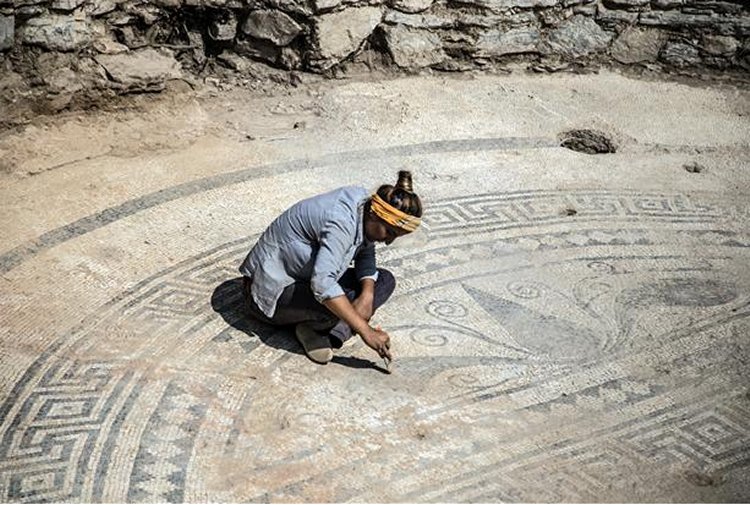Excavations Begin In Ancient City Of Antiocheia Ad Cragnum, Turkey
Conny Waters - AncientPages.com - Teams digging in an ancient city on Turkey’s Mediterranean coast that was once home to pirates discover a variety of artifacts, including anchors and a bath.
Once a hub for pirate activity, the ancient city of Antiocheia Ad Cragnum in Antalya’s Gazipaşa district is now undergoing renewed excavations that is shedding new light on the history of the area.
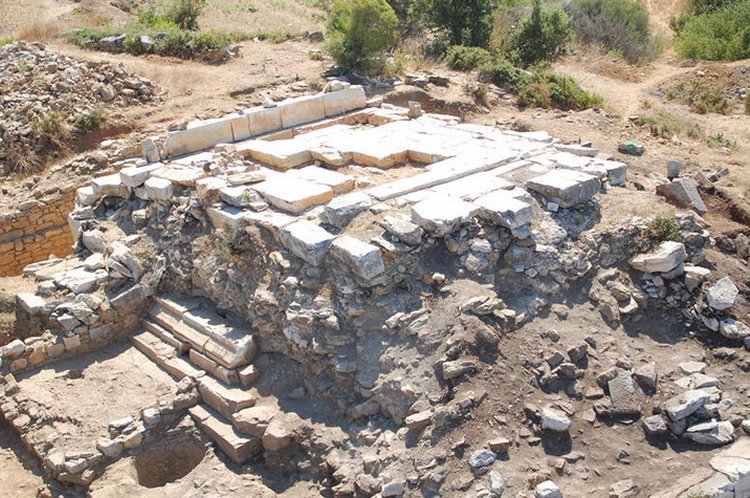
Antiochia ad Cragum is located in ancient Rough Cilicia on the south coast of Turkey, approximately north of Cyprus.
“In the excavations, we have uncovered a 600-meter-long mosaic, some remains of a bath and a parliament building so far,” said Dr. Birol Can, the excavation crew coordinator for the site and a lecturer at Uşak University’s Science and Literature Department Archaeology Department.
“Aside from these, we also unearthed a small temple with a mosaic floor covering … and discovered the head of a mythological figure, Medusa, near the temple. This is a figure directly on a triangular-shaped pediment based on four columns. Medusa is the mortal one of the Gorgon siblings, a fantastic figure emerging from the imagination of the ancient people. Described as snake-headed, bronze-handed, and golden winged, Medusa emerges as a figure that terrifies everyone,” he said.
“Some sources have shown that the entire Cilician coastline was used as shelter by the pirates. Its geographical location and connection to the sea also contributes to this idea. The structure of the area is one where the mountains are parallel to the sea. Though the rocky areas are close to the sea, the city nevertheless is 350 meters high.
The pirates took advantage of the means provided by nature. Before the Roman period, the pirates sometimes raided the cities on the land and sometimes the trade ships. Roman commander Pompeius Magnus eliminated the threat of piracy from this ‘pirate city,’ after which we see a Roman presence in the area,” Can said.
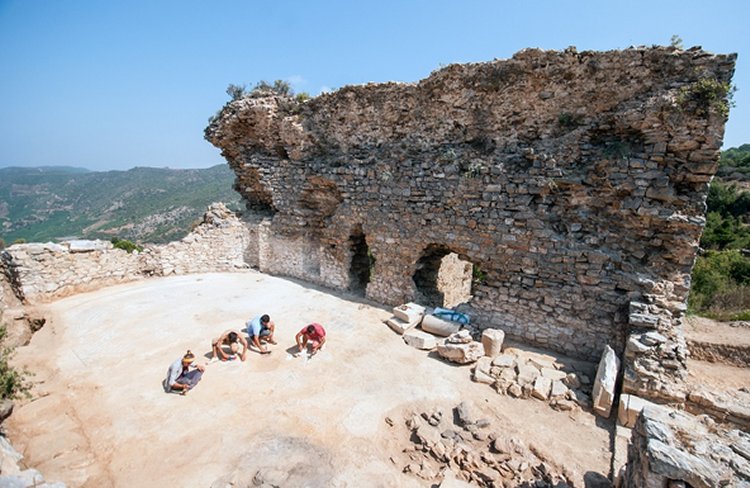
After the Roman Empire developed a strong presence in the area, the town was ceded to the Cappadocia Kingdom.
After the Roman Empire developed a strong presence in the area, the town was ceded to the Cappadocia Kingdom, added Can.
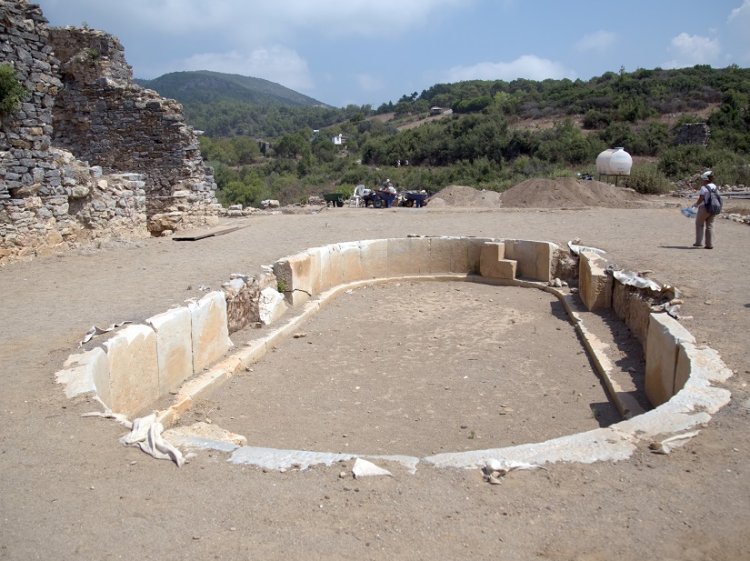
"Roman commander Pompeius Magnus eliminated the threat of piracy from this ‘pirate city,’ after which we see a Roman presence in the area”
“In this period, Cappadocian King Antiochos IV made investments here and built towns. One of these towns was Antiochos in Antiocheia ad Cragnum.”
The professor also said they had discovered 2,000 to 2,500-year-old anchors during underwater expeditions that are set to enlighten the town’s history.
Excavations in the ancient city have been conducted by 60 people since 2005, Can said, adding that the dig is being conducted under the chairmanship fo Nebraska University Professor Michael Hoff.
Updated on October 31, 2022
Written by Conny Waters - AncientPages.com Staff Writer
More From Ancient Pages
-
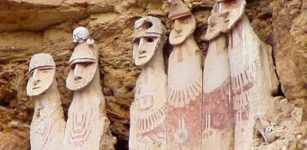 Mysterious Sarcophagi Belonging To The Chachapoyas The Cloud People
Archaeology | Mar 4, 2014
Mysterious Sarcophagi Belonging To The Chachapoyas The Cloud People
Archaeology | Mar 4, 2014 -
 Fossils Of Mysterious Homo Naledi Change Our Understanding Of Evolution
Archaeology | May 10, 2017
Fossils Of Mysterious Homo Naledi Change Our Understanding Of Evolution
Archaeology | May 10, 2017 -
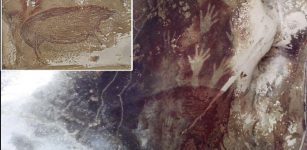 Climate Change Will Soon Erase Ancient Cave Art Of Sulawesi, Indonesia
Archaeology | May 17, 2021
Climate Change Will Soon Erase Ancient Cave Art Of Sulawesi, Indonesia
Archaeology | May 17, 2021 -
 Simple 1,000-Year-Old Medieval Medicine Cure Can Treat Modern Infections – Study Shows
Civilizations | Jul 28, 2020
Simple 1,000-Year-Old Medieval Medicine Cure Can Treat Modern Infections – Study Shows
Civilizations | Jul 28, 2020 -
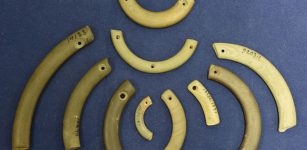 Stone Age Friendship Ornaments Examined By Scientists
Archaeology | Apr 25, 2022
Stone Age Friendship Ornaments Examined By Scientists
Archaeology | Apr 25, 2022 -
 On This Day In History: Explorer Of The New World Amerigo Vespucci Born – On Mar 9, 1451
News | Mar 9, 2017
On This Day In History: Explorer Of The New World Amerigo Vespucci Born – On Mar 9, 1451
News | Mar 9, 2017 -
 Last Of The Giant Camels And Archaic Humans Lived Together In Mongolia Until 27,000 Years Ago
Fossils | Mar 24, 2022
Last Of The Giant Camels And Archaic Humans Lived Together In Mongolia Until 27,000 Years Ago
Fossils | Mar 24, 2022 -
 On This Day In History: Brazil Was Officially Discovered – On Jan 26, 1500
News | Jan 26, 2017
On This Day In History: Brazil Was Officially Discovered – On Jan 26, 1500
News | Jan 26, 2017 -
 More Than 60,000 Ancient Maya Structures Obscured By Inaccessible Forest Revealed By LIDAR
Archaeology | Sep 29, 2018
More Than 60,000 Ancient Maya Structures Obscured By Inaccessible Forest Revealed By LIDAR
Archaeology | Sep 29, 2018 -
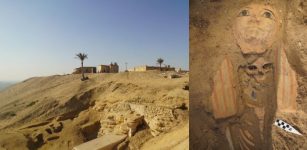 Ancient Egyptian Tombs With Stunning Trove Of Artifacts And Human Remains Unearthed In Saqqara
Archaeology | Jan 17, 2024
Ancient Egyptian Tombs With Stunning Trove Of Artifacts And Human Remains Unearthed In Saqqara
Archaeology | Jan 17, 2024 -
 TB Was Transmitted in South America – DNA Study Shows How It Happened
Archaeology | Mar 17, 2022
TB Was Transmitted in South America – DNA Study Shows How It Happened
Archaeology | Mar 17, 2022 -
 King Menelaus Of Sparta: Husband Of Helen Of Troy And Key Figure In The Trojan War
Featured Stories | May 27, 2020
King Menelaus Of Sparta: Husband Of Helen Of Troy And Key Figure In The Trojan War
Featured Stories | May 27, 2020 -
 Two 1,800-Year-Old Sarcophagi Of Wealthy People Accidentally Found At Ramat Gan Safari Park
Archaeology | Feb 22, 2021
Two 1,800-Year-Old Sarcophagi Of Wealthy People Accidentally Found At Ramat Gan Safari Park
Archaeology | Feb 22, 2021 -
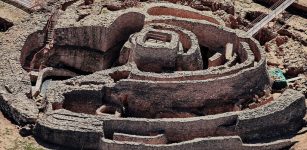 Motilla del Azuer: Impressive And Unusual 3,200-Year-Old Fortress
Featured Stories | Nov 13, 2018
Motilla del Azuer: Impressive And Unusual 3,200-Year-Old Fortress
Featured Stories | Nov 13, 2018 -
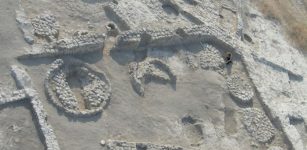 Olive Trees Were First Domesticated 7,000 Years Ago In The Jordan Valley
Archaeology | Jun 17, 2022
Olive Trees Were First Domesticated 7,000 Years Ago In The Jordan Valley
Archaeology | Jun 17, 2022 -
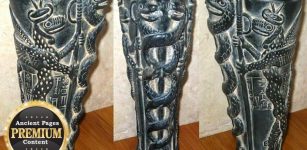 ‘Be Wise As Serpents And Harmless As Doves’ – The Story Of The Serpent People And Their Guidance
Civilizations | May 7, 2014
‘Be Wise As Serpents And Harmless As Doves’ – The Story Of The Serpent People And Their Guidance
Civilizations | May 7, 2014 -
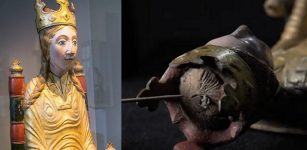 Viklaumadonna Hides A Thousands-Year-Old Secret
Artifacts | Jan 5, 2020
Viklaumadonna Hides A Thousands-Year-Old Secret
Artifacts | Jan 5, 2020 -
 Hazelnuts -‘Time Capsule’ To Reconstruct Landscape Of Ancient Forests In Sweden
Archaeology | Mar 5, 2024
Hazelnuts -‘Time Capsule’ To Reconstruct Landscape Of Ancient Forests In Sweden
Archaeology | Mar 5, 2024 -
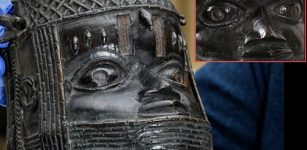 Benin Bronze Sculpture Looted By British Soldiers In Nigeria – Returns Home
Archaeology | Apr 2, 2021
Benin Bronze Sculpture Looted By British Soldiers In Nigeria – Returns Home
Archaeology | Apr 2, 2021 -
 Manannán Mac Lir – Irish God Of Sea, Healing, Weather And Master Of Shapeshifting
Celtic Mythology | Mar 2, 2023
Manannán Mac Lir – Irish God Of Sea, Healing, Weather And Master Of Shapeshifting
Celtic Mythology | Mar 2, 2023

